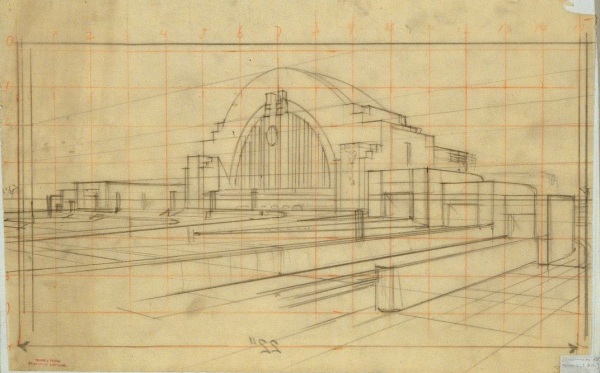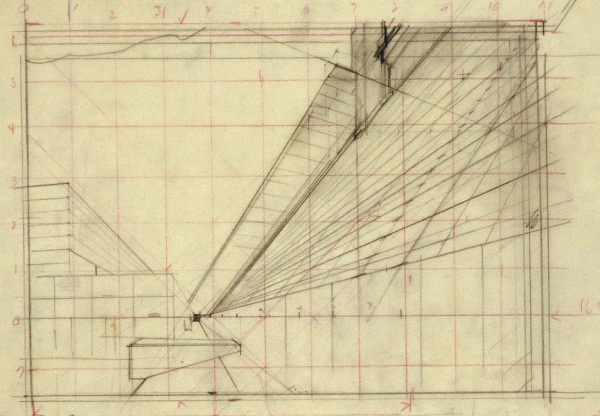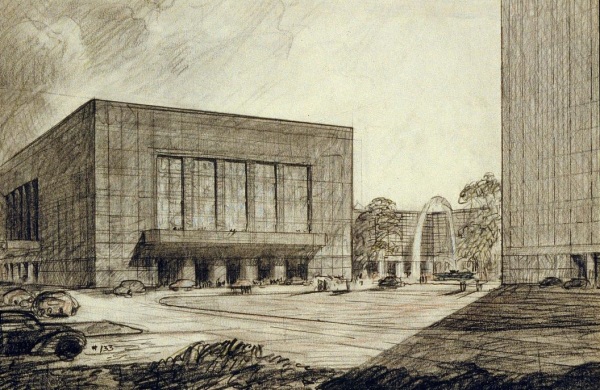Hugh Ferriss
Hugh Ferriss (1889 – 1962) was an American delineator and architect. According to Daniel Okrent, Ferriss never designed a single noteworthy building, but after his death a colleague said he ‘influenced my generation of architects’ more than any other man. He did so much to promote the city of the future as a collection of immense skyscrapers, but all of them were cities unbuilt.
In the book The Metropolis of Tomorrow, originally published in 1929 and reprinted in 1998, Ferris gave us his vision of how he believes the cities of tomorrow. The book is broken up into three sections titled, Cities of Today, Projected Trends, and An Imaginary Metropolis.
Michael Mallow comments about Ferris: “By the mid-twenties, renderings by Ferriss had become almost de rigeur for successful competition projects; countless skyscrapers waited their turn to be bathed in the dark monumentality emanating from his drafting table. In these works a blasé department store appears as a giant lording over its block. Stodgy hotels cease to be stodgy hotels and become looming silhouettes emerging from the urban haze like shipwrecks. Ferriss went to grand new lengths in suppressing detail for mood, and clients loved it.”
Ferriss was trained as an architect at Washington University, but, early in his career, began to specialize in creating architectural renderings for other architects’ work rather than designing buildings himself. In 1912, Ferriss arrived in New York City and was soon employed as a delineator for Cass Gilbert. Some of his earliest drawings are of Gilbert’s Woolworth Building; they reveal that Ferriss’s illustrations had not yet developed his signature dark, moody appearance.
“It can be recalled that there have been periods in the past when architects must have been quite aware of the influence of Architecture and consciously employed it for a specific object. Moreover, it is precisely these periods that are still spoken of as the “great periods” of Architecture.” Ferris pointed at his book
In his time, these illustrations were radically dramatic, opening the eyes of architects and corporations to the possibilities. The way that his ‘big ideas’ interacts with a singular perspective of thought are what balance in Ferriss’ renderings.
We would like to finish with a quote by Ferris himself, talking about the Metropolis:
“The contemplation of the actual Metropolis as a whole cannot but lead us at last to the realization of a human population unconsciously reacting to forms which came into existence without conscious design […] A hope, however, may begin to define itself in our minds. May there not yet arise, perhaps in another generation, architects who, appreciating the influence unconsciously received, will learn consciously to direct it?”
All images thanks to Kosmograd, that have created a Flickr set of 341 images of drawings by Hugh Ferriss, taken from the collection available online at the Avery Libary of Columbia University.






